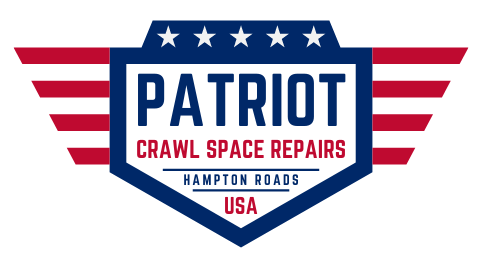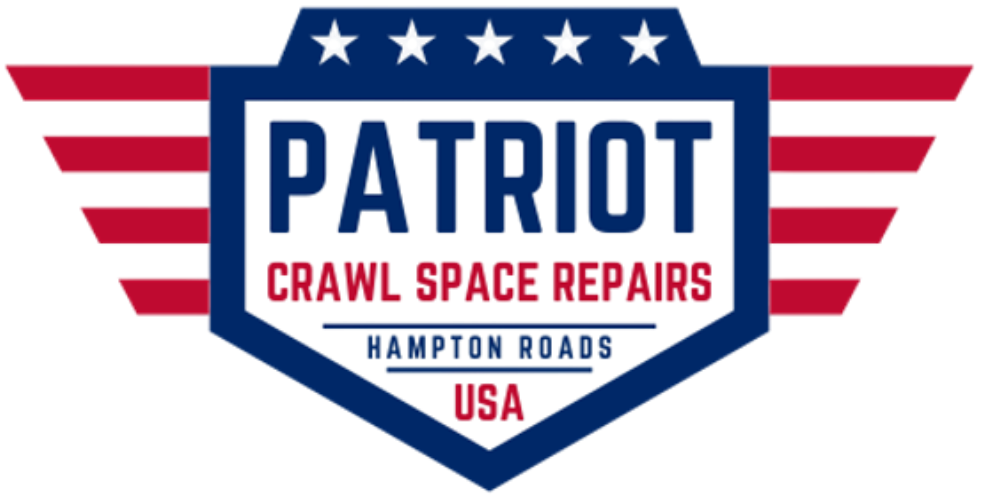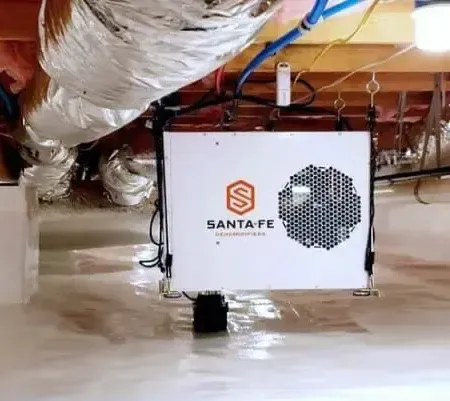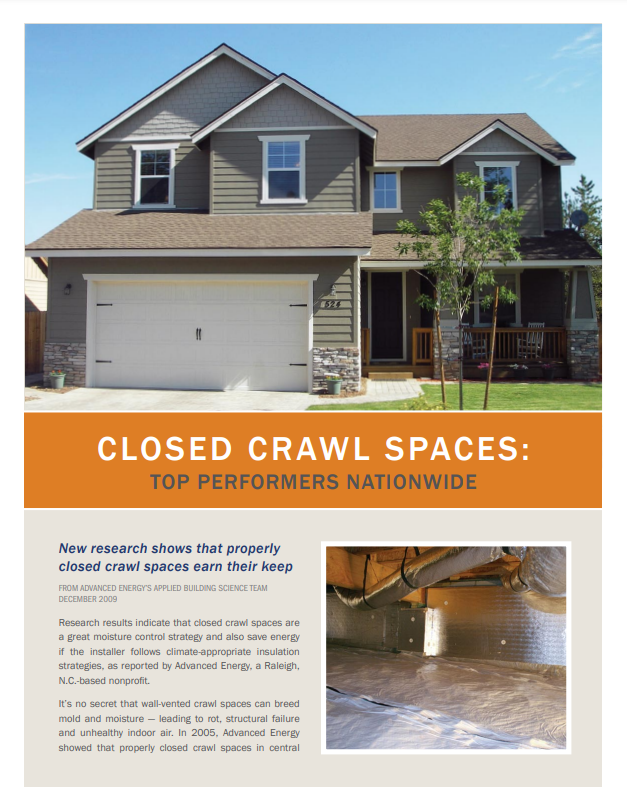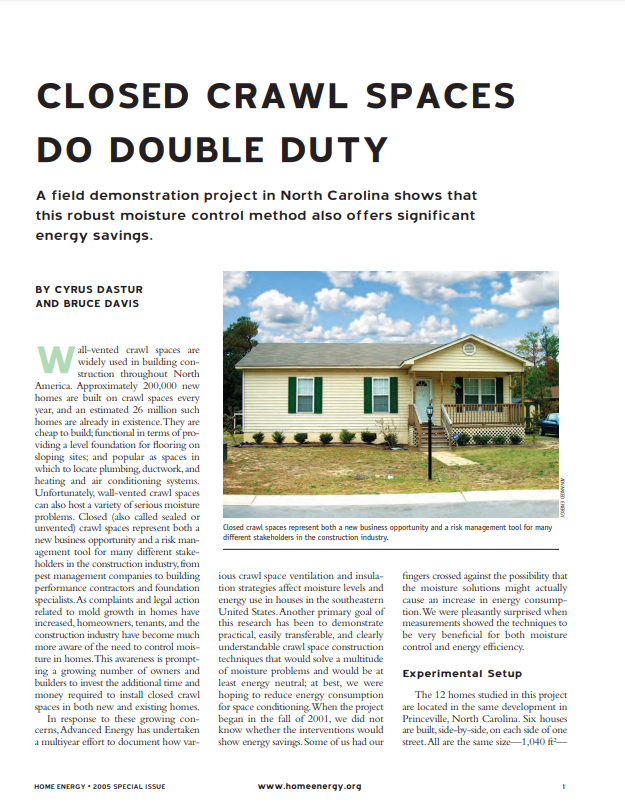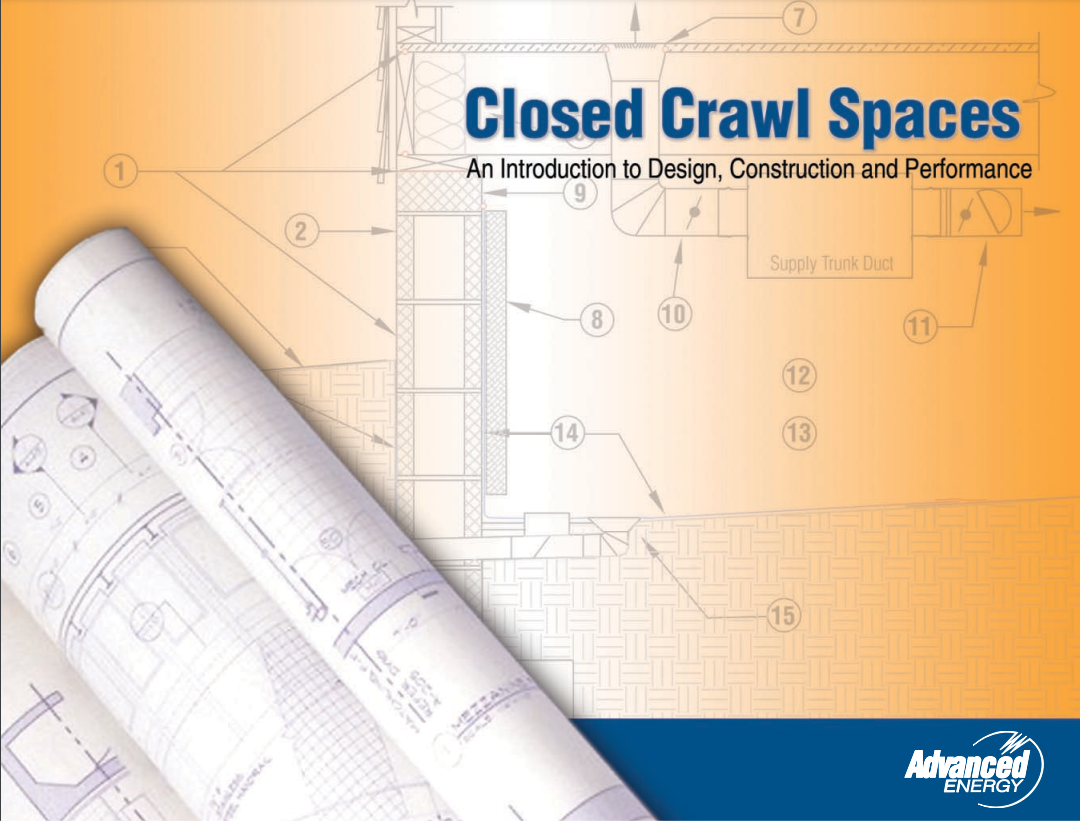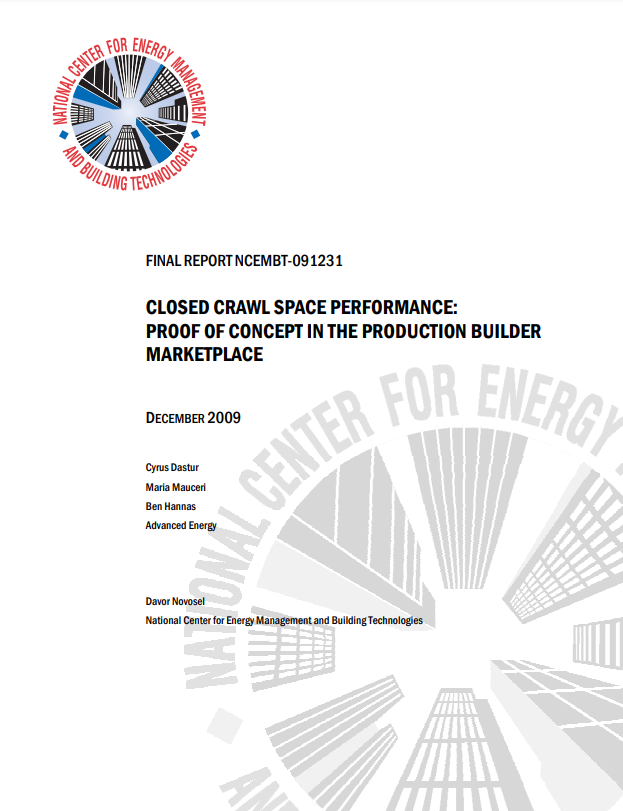Crawl Space Encapsulation
Crawl space encapsulation is a proven way to keep your crawl space dry, mold free, and prevent foundation wood damage. We provide encapsulation packages for various budgets and proudly serve Hampton Roads.
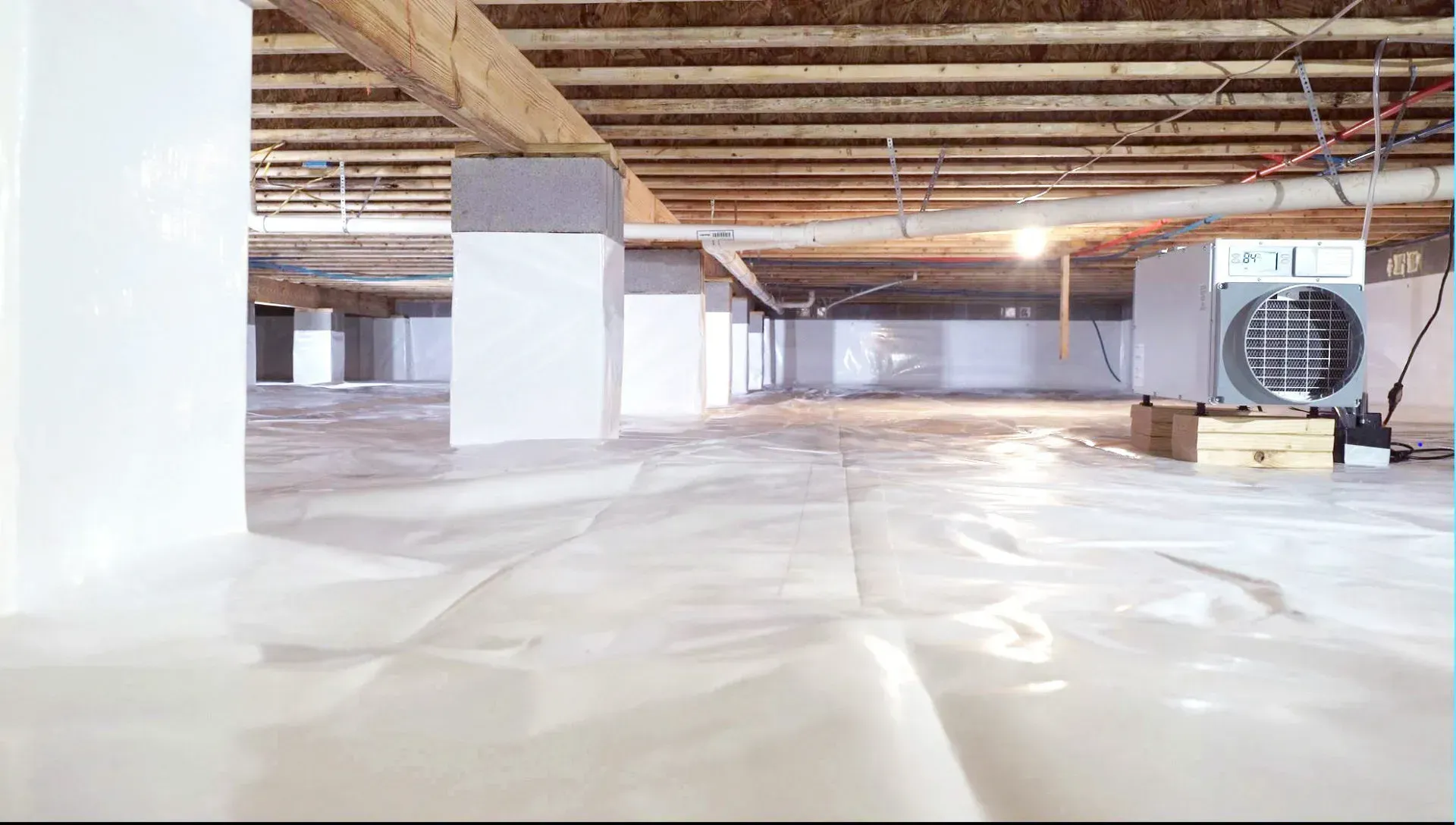
In Southeast Virginia we have a very humid and hot Summer season, and traditional wall vented crawl spaces allow hot humid air into the crawl space over those hot months. When this happens, condensation occurs. This condensation leads to mold & fungus growth, wood rot, poor indoor air quality, and damaged insulation and duct-work. In addition large amounts of rainfall and groundwater can magnify moisture issues in the crawl space.
The only solution that has been proven to prevent condensation and moisture damage is sealing off those foundation wall vents, and providing dry air to the crawl space. This is typically done in the form of a dehumidifier, but can also be done with conditioned air.
Encapsulation simply means sealing the foundation vents so outside air can't enter the crawl space. We then install a well sealed durable vapor barrier, and a dehumidifier. Some crawl spaces also require a French drain and sump pump to mitigate groundwater issues.
Why Patriot Crawl Space Repairs?
We are a family owned and operated company. From customer service to quality control, the owners, April and Robbie McCarty, directly oversee your project.
Since we are family owned and operated, we have low overhead. We are able to upgrade every aspect of your encapsulation, and do it for a lower price than the mega sized companies and national franchises. We offer premium workmanship at a lower price.
We hire the best crawl space techs at the highest pay in the industry. We find that paying well, produces on time work at the highest quality, so it is a positive investment. We are actually able to offer a better product at a lower price by hiring higher paid technicians.
We use "grade-A" materials. From Santa Fe and Aprilaire dehumidifiers, to YCS cleaners and vapor barriers, quality is priority #1.
The Encapsulation Process
We will work with you to formulate an encapsulation plan that fits your needs and budget. Encapsulation includes some or all of the following steps.
- Remove trash and old or damaged insulation.
- Clean the crawl space wood to remove fungus.
- Install a sold ground cover vapor barrier.
- Seal your crawl space vents and access holes.
- Install a commercial grade dehumidifier.
- Install crawl space lighting and a new access door.
- Provide you with an in-home humidity monitoring system.
- If needed, install crawl space drainage and a sump pump.
- Repair damaged wood or foundation support if needed.
We offer 2 crawl space encapsulation options based on your needs and budget.
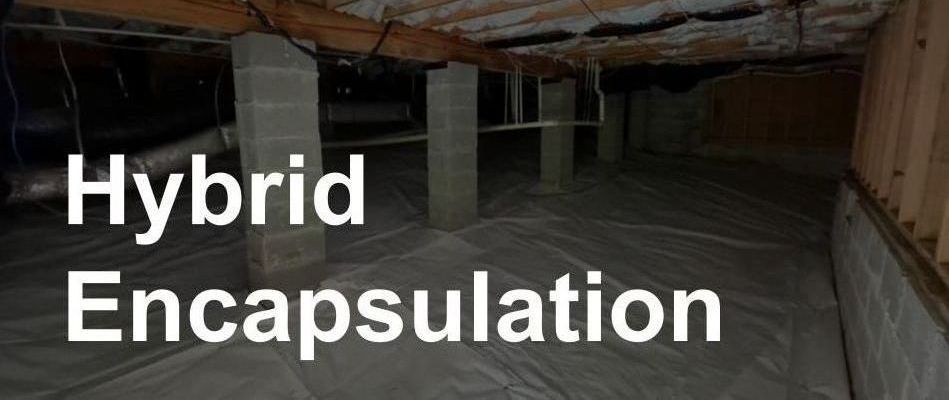
Hybrid Encapsulation Includes:
- Saves $$ if full encapsulation is not needed.
- Preserves wood, prevents mold and moisture.
- A ground staked 10-mil vapor barrier.
- Vents and access holes sealed.
- Dehumidifier.
- Crawl space lights.
- In home humidity monitor.
- Fully sealed crawl space door.
(MAY ALSO INCLUDE WATERPROOFING, FUNGUS CLEANING, AND/OR STRUCTURAL REPAIRS.)
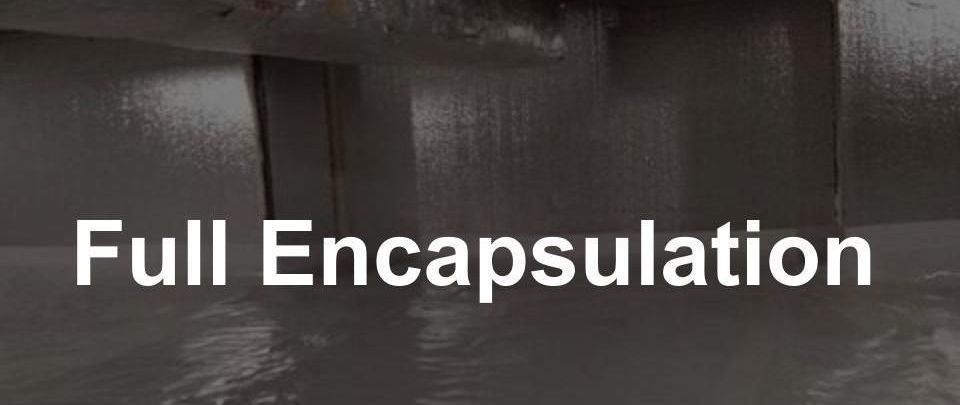
Full Encapsulation Includes:
- Fully sealed 45-mil Geo Mat vapor barrier.
- Sump-pump & drain system.
- Crawl space wall insulation.
- Vents and access holes sealed.
- Dehumidifier & Sump Pump.
- Crawl space lights.
- In home humidity monitor.
- Fully sealed crawl space door.
(MAY ALSO INCLUDE WATERPROOFING, FUNGUS CLEANING, AND/OR STRUCTURAL REPAIRS.)
Frequently Asked Questions
Which Option Do We Recommend?
In most cases we feel that hybrid encapsulation accomplishes all of the typical goals, while leaving the space fully accessible for termite inspection, and easier to repair if there is a leak, duct-work repairs, or rodent issues in the future. This is what we would put in our own homes because it allows for easier upkeep and maintenance.
Because of the huge cost difference, We have researched and monitored this question to exhaustion, and this is our honest advice for homes in the Hampton Roads area.
If you have a higher crawl space that allows storage or easy cleaning access, or extreme auto immune issues, there are cases where we think full encapsulation liners should be considered. In most low crawl space applications common in Hampton Roads, we don't feel it is something that is feasible to maintain over the long term. This answer may be different in different climates and geographic areas of the country.
Over the years, science has shown that most crawl space moisture comes from humid air entering through unsealed doors and vents, not up from the ground. In cases where there is standing water or groundwater issues, we recommend a drain and sump pump, not plastic as the solution.
What is the cost difference between Full and Hybrid Encapsulation?
Habrid encapsulation typically costs $10,000 to $15,000, and full encapsulation typically costs $16,000 to $28,000.
In most cases we recommend hybrid encapsulation. One isn't necessarily better than the other. Full encapsulation is used when there are heightened autoimune issues or higher crawl spaces that allow storage and easy cleaning.
Are there savings or tax credits?
Yes. All encapsulations eligible for a $1,200 tax credit under the 2022 Inflation Reduction Act home air sealing and insulation clause through 2025.
You may also save on your energy bills by sealing your crawl space vents, sealing ductwork, or adding insulation.
Do all encapsulations need a sump pump?
We require at least a sump pump in our full encapsulations because we don't want it to turn into a pool if you have a leake or flooding.
Hybrid encapsulations only need a sump pump if there is eveidence of water intrusion.
When there is evidence of water intrusion we typically recommend a perimeter drain and sump pump system. Water against your foundation walls is a serious threat to the structure going forward.
Do I need to do structural repairs before encapsulation?
Yes. If there are structural or wood repairs needed in your crawl space, you need to do those first. The reaons is that once you encapsulate the crawl space, it is likely to damage the vapor barrier if you conduct heavy repairs in the future, which will increase your cost.
Will a vapor barrier alone solve moisture issues?
No. A vapor barrier only mainly helps keep the crawl space clean, but in our humid Virginia climate, condensation from hot summer air is the biggest moisture concern. A vapor barrier won't help with this, which is why we recommend sealing the vents and insalling a dehumidifier.
Vapor barriers won't solve ground water issues either. If you have ground water issues a drain and sump pump are the proper remedy.
Do I need to add crawl space insulation?
Once your crawl space is sealed, it will actually have better energy efficiency than a vented crawl space with floor insulation, even though you have removed the insulation.
Adding in wall insulation increases the energy efficiency of the home slightly, but most homeowners say their floors and water are warmer in the winter and cooler in the summer once the vents and access holes are sealed without insulation.
Can I keep my existing floor insulation?
If you have a relatively clean crawl space or a newer home, you can keep the insulation, but it is honestly better long term to just remove it, as it harbors rodents, mold, and insects.
If the insulation is moldy and damaged, or if you have widespread mold and fungus on the wood, it definitely needs to come out.
Do I need full encapsulation to comply with building codes?
There is a major difference between new construction building codes, and existing building codes.
In existing homes, crawl space work is only required to improve the situation in the space. Many companies cite new construction conditioned crawl space code to convince owners they need full encapsulation, but this is not true. Hybrid encapsulation meets all building exsiting home codes.
These nuances allow for full or hybrid crawl space encapsulation, while still being code compliant.
Whether you opt for full or hybrid encapsulation really depends on the design of your crawl space and your budget. We can help you determine a plan that is best for your home.
Do I need a service plan?
Once you have encapsulated your crawl space and installed a dehumidifier, we recommend servicing the dehumidifier every 6 to 9 months. You can either do that yourself, or have us do it.
Service plans are not a requirement of our warranties.
What type of warranty do you provide?
There are factory warranties on dehumidifiers and sump pumps.
We provide a 5 year equipment warranty on dehumidifiers, condensate pumps, lights, fans, and sump pumps if you are on a service plan.
We provide a 15 year material warranty on vapor barriers, so long as you are on a service plan. This warranty does not cover damage from sharp objects, dirt getting in from the door being left open, plumbing leaks, or catastrophic flooding.
All drain systems have a 25 year material warranty with a continued service plan.
Structural repairs including piers, helicals, and wood repairs come with a 50 year material warranty, excluding natural disaster, flood damage, and wood damage due to leaks or lack of proper moisture control.
Proper moisture control includes encapsulation and dehumidifier on a service plan for crawl space wood, and a frech drain and sump pump if the crawl space is below grade or flood prone.
In Depth Research Publications
